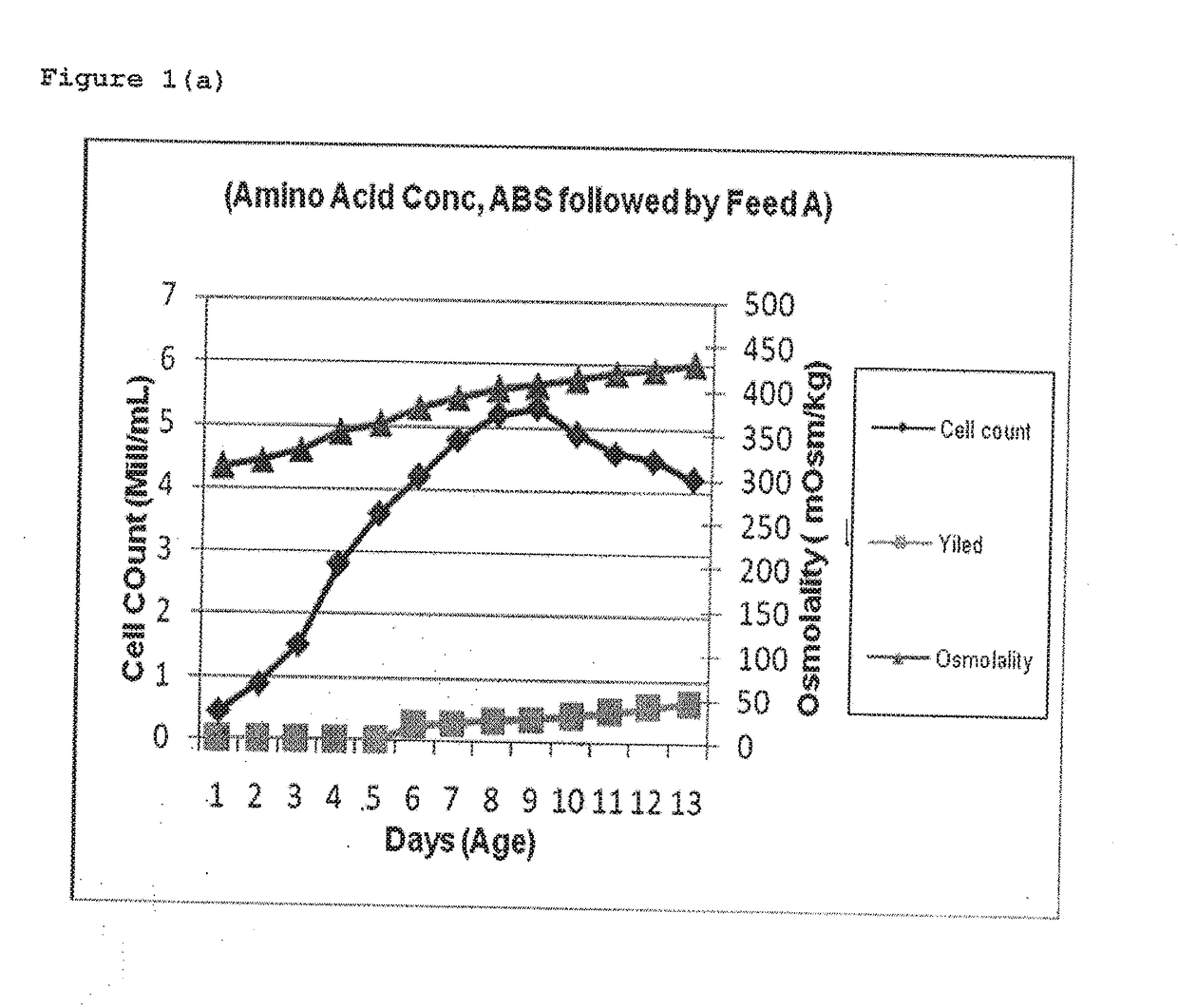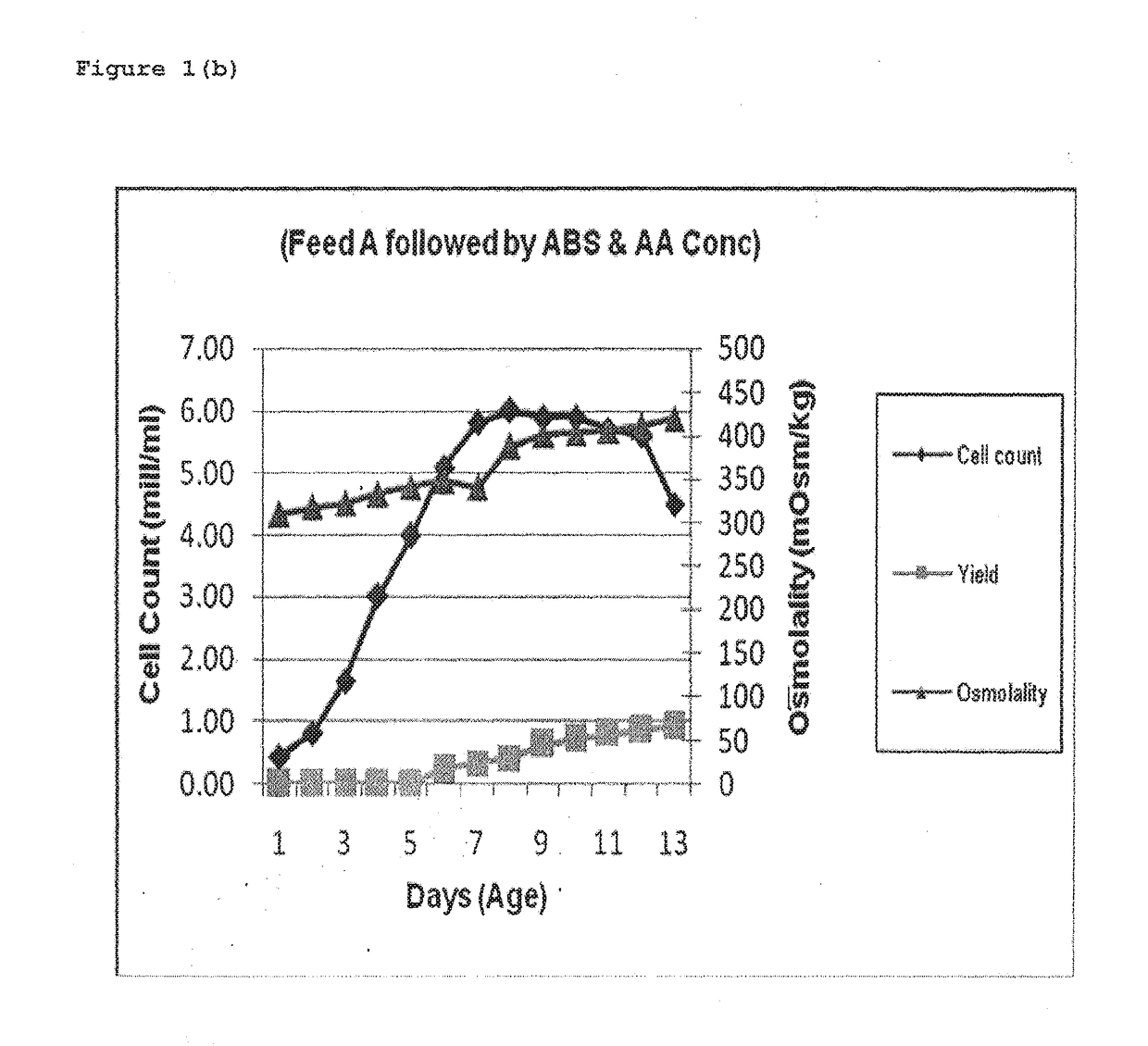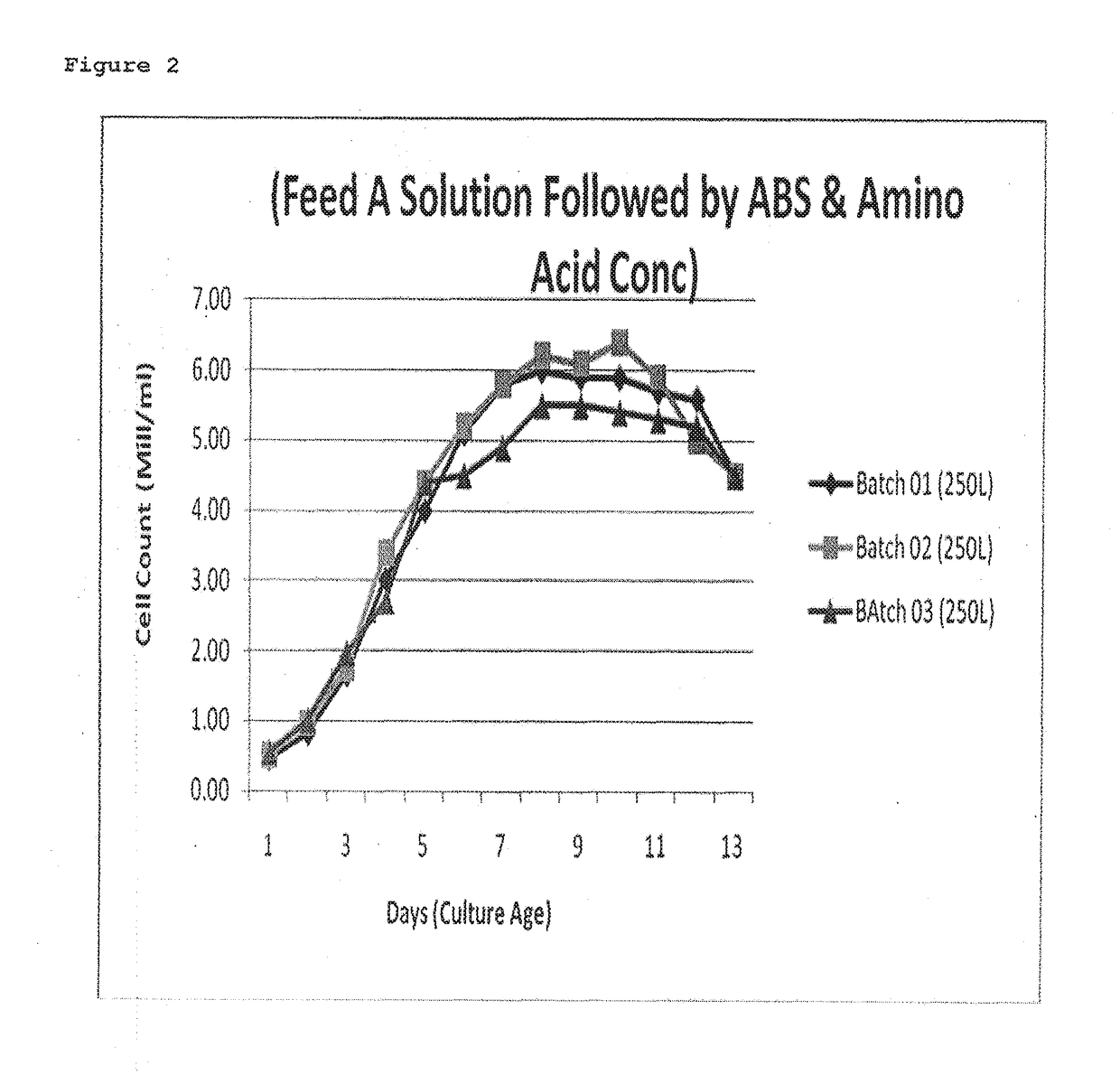Feeding strategies and purification processes for monoclonal antibody production
a monoclonal antibody and purification process technology, applied in the field of monoclonal antibody purification and purification processes, can solve the problems of protein aggregates, undesirable immunological responses in patients, and high levels of aggregates in protein formulations, so as to improve the yield of monoclonal antibodies, improve the potency, and reduce the amount of aggregates produced
- Summary
- Abstract
- Description
- Claims
- Application Information
AI Technical Summary
Benefits of technology
Problems solved by technology
Method used
Image
Examples
example 1
Cell-Line Source and Development Summary
[0040]The 17C7 monoclonal antibody has been shown to neutralize multiple isolates of the rabies virus in both in vitro and in vivo assays. The 17C7-expressing hybridoma was isolated from transgenic HuMAb mice (Medarex) containing human immunoglobulin genes and inactivated mouse heavy chain genes and kappa light chain genes and thus is a fully human IgG1 antibody containing human kappa light chains.
[0041]HuMAb mice were injected with 1 / 10 of a human dose of RabAvert™ (Chiron) or Imovax® (Aventis) rabies vaccines using complete Freund's adjutant in the first week, and RIBI adjuvant in subsequent weeks for a total of 6-8 weeks. Hybridomas were generated by fusion of splenocytes and partner cells (P3X63Ag8.653 mouse myeloma cells). Hybridoma supernatants were screened for reactivity in a rabies virus glycoprotein ELISA and RFFIT assays and reactive antibodies were purified from hybridoma cultures by protein A sepharose chromatography.
[0042]The ant...
example 2
Cell Culture and Bioreactor Processes
[0044]Fermentation was carried out at temp 3720 C. (±) 0.3 for a duration of 12 days (±) 1 day. Feed A solution i.e. Cell Boost 2™ (R15.4) comprising of Glucose, vitamins and amino acids was prepared as 5 to 10% solution, in medium component or WFI and was fed at a flow rate of 5 to 15 ml / min or more, and final concentration in the reactor was made as 0.2 to 0.5%. Feed A was added when the cell count was between 2-4 mill Cells / mL generally at day 2 or 3, and at a flow rate of 5-15 ml / min such that the final concentration of Feed A in the fermenter was around 0.2% to 0.5%, thereafter during day 4th to 7th Feed B & C were added which were basically Amino acid concentrates.
[0045]A chemically defined Medium (CD-CHO) was used as fermentation medium.
[0046]Table 1 indicates that when Amino acid solution was fed first followed by Feed A, high Osmolality was observed especially during 4th to 9th day which finally affected the cell growth and also the yie...
example 3
Purification of Rabies Human Monoclonal Antibodies (17C7) at 350 L Scale
[0048]
TABLE 3StepsSub-StepStep 1- Prosep vAPacked Bed Height - 11.3 cmUltra protein ABinding capacity-column loaded >25 mg / mLChromatographyHETP TestingInitial SanitizationEquilibration (5 CV, ≦300 cm / hr)Loading (≦300 cm / hr)Post Load Wash I(≦300 cm / hr)Post Load Wash II(≦300 cm / hr, 10 mM Phosphate buffer,250 mM NaCl, pH 6.0)Elution(5 CV, ≦150 cm / hr)CIP(5 CV, ≦300 cm / hr)Storage(3 CV, ≦300 cm / hr)Step 2- ViralNeutralization of low pH treated Protein AInactivationEluate carried out with 20 mM citrate buffer,300 mM NaCl, pH 6.0Step 3- FractogelPacked Bed Height (11.3 cm)EMD SE HiCapBinding capacity(~column loaded >25 mg / mL)ChromatographySanitization (0.5M NaOH, 5 CV, ≦300 cm / hr)Static HoldChargeEquilibration (5 CV, ≦300 cm / hr)Loading (≦300 cm / hr)Post Load Wash (3 CV, ≦300 cm / hr)Elution(10-15 CV, ≦150 cm / hr(0-60% Buffer B(20 mM Citrate buffer, pH 6.0, 300 mM NaCl))CIP / Sanitization (0.5M NaOH, 5 CV, ≦300 cm / hr)Storage (0...
PUM
| Property | Measurement | Unit |
|---|---|---|
| flow rate | aaaaa | aaaaa |
| pH | aaaaa | aaaaa |
| flow rate | aaaaa | aaaaa |
Abstract
Description
Claims
Application Information
 Login to View More
Login to View More - R&D
- Intellectual Property
- Life Sciences
- Materials
- Tech Scout
- Unparalleled Data Quality
- Higher Quality Content
- 60% Fewer Hallucinations
Browse by: Latest US Patents, China's latest patents, Technical Efficacy Thesaurus, Application Domain, Technology Topic, Popular Technical Reports.
© 2025 PatSnap. All rights reserved.Legal|Privacy policy|Modern Slavery Act Transparency Statement|Sitemap|About US| Contact US: help@patsnap.com



